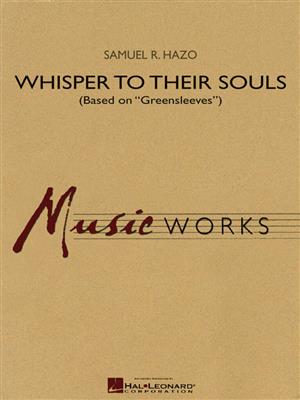Results
-
£37.95
Sahara - Roland Barrett
Take a trip across the desert with this new work from composer Roland Barrett. A mysterious introduction sets the mood for an interesting and highly educational aleatoric passage. Easily achieved, students freely improvise on a given set of pitches. As more and more instruments enter, the piece builds until it gives way to a rhythmically energized section beginning with percussion and an ostinato figure in the bass voices. Very easy! (2:10)
Estimated dispatch 7-14 working days
-
£53.95
Chant and Savage Band - Brian Balmages
Contemporary harmonies and interesting colors are at the center of this innovative work. While well within the ability of young musicians, this piece has an uncharacteristically mature sound that will captivate your audience. After a mesmorizing lyrical opening, percussion begins the savage dance that grows more and more powerful as the piece progresses. Optional percussionists throughout the audience can enhance the entire experience as the dancers continue till utter exhaustion and collapse to the ground. Very compelling! (4:10)
Estimated dispatch 7-14 working days
-
£50.50
Funtango - Chris Sharp
This tongue-in-cheek approach to the classic tango will keep your percussion section busy with lots of Spike Jones type comic effects, including siren whistle, bulb horn, slapstick, vibraslap, guiro, and clapping. To aid with performance flexibilty, an alternate optional snare drum part is provided for more accomplished players. This is one "fun tango" that literally has all the bells and whistles! (2:10)
Estimated dispatch 7-14 working days
-
 £42.50
£42.50On Navy Pier
Artist Level (correlates with Book 1, p. 34) Here is a spirited march for young players that uses easy chromatic figures and contrasting instrumentation. The effective use of varied dynamics helps to make this one sparkle! (2:10)
Estimated dispatch 7-14 working days
-
 £79.99
£79.99Convergence - John Moss
Here is an expansive work featuring a wide spectrum of emotional and sonic elements for symphonic band. From striking full band effects to delicate woodwind and percussion writing, this is a marvelous showcase for your entire ensemble. Featured is an amazing contrapuntal section for the clarinets, a flowing chorale, powerful fanfare-like passages, dynamic full band unisons and soaring melodies. Due to the length of the piece, the composer has provided programming options for performing shorter versions. (10:20)
Estimated dispatch 7-14 working days
-
 £76.99
£76.99Whisper to Their Souls (based on Greensleeves) - Samuel R. Hazo
Here is a unique and creative setting of the familiar tune Greensleeves (What Child Is This?) that opens with the melody scored softly for the woodwinds. The full ensemble contributes a series of harmonically rich phrases until the work reaches an emotional climax at the powerfully scored key change. While this is certainly effective as a holiday offering, it can be performed as a memorable tone poem any time of the year. Dur: 4:10
Estimated dispatch 7-14 working days
-
£47.50
Praise to the Lord - Vaclav Nelhybel
Extra trumpet parts available: #50480960. Duration: ca. 10 minutes.
Estimated dispatch 7-14 working days
-
 £94.99
£94.99Ballad for Band - Morton Gould
Morton Gould's Ballad For Band for Symphonic Band. Score and parts.Born in Richmond Hill, New York, on 10 December 1913, Morton Gould was recognised early on as a child prodigy with theability to improvise and compose. At the age of six he had his first composition published. He studied at the Institute of Musical Art (now the Juilliard School), but his most important teachers were Abby Whiteside (Piano) andVincent Jones (composition).Gould enjoyed an illustrious career. In addition to gaining a Pulitzer Prize for 'Stringmusic', he was Musical America's 1994 Composer-of-the-Year and recieved a Kennedy Center Honor inrecognition of lifetime contributions to American culture.A long-time member of the American Society of Composers, Authors, and Publishers, Gould was elected president of ASCAP in 1986, a post he held until 1994.In 1986 he was elected to the American Academy and Institute of Arts and Letters. He also served on the board of the American Symphony Orchestra League and on the National Endowment for the Arts music panel.
Estimated dispatch 7-14 working days
-
 £104.50
£104.50Symphonic Journey #1 - Roland Barrett
Youll find instant success with this fresh sounding, contemporary work. Combining contemporary concepts with musicality and active percussion this has proven to be one of Rolands best. (5 minutes, 10 seconds)
Estimated dispatch 7-14 working days
-
£82.50
Tone Poem Symphonique - John Cacavas
Best described as a contemporary chorale, this moving and introspective work demonstrates colors, textures and contrasts that are possible with the modern concert band. The independent and interweaving melodic lines make this a study in phrasing and interpretation for both conductor and performer. A work well suited as a contest warm-up selection. (4 minutes 10 seconds)
Estimated dispatch 7-14 working days
